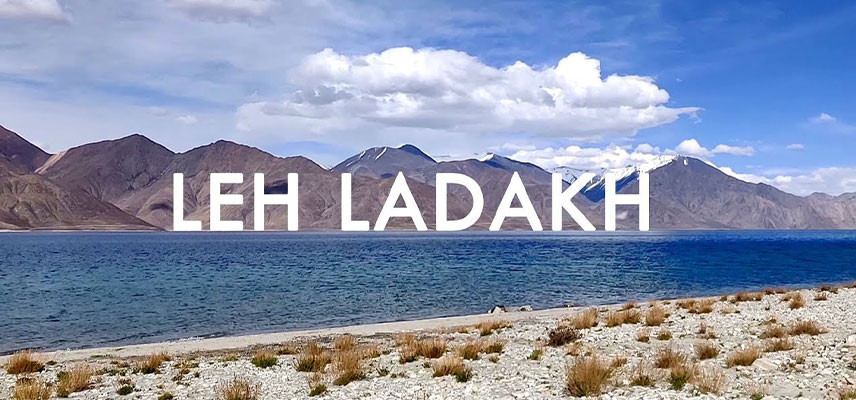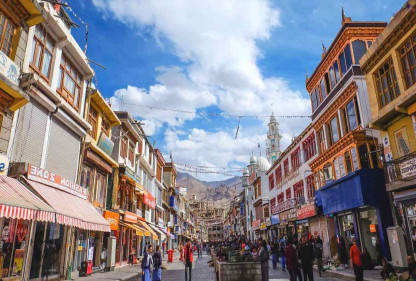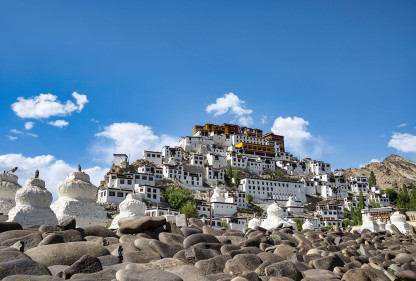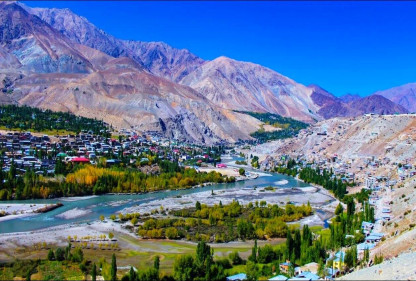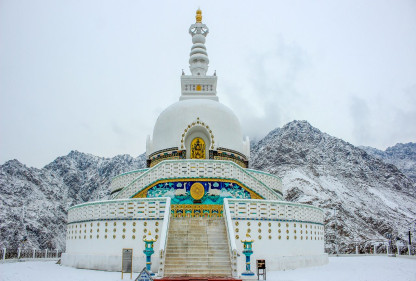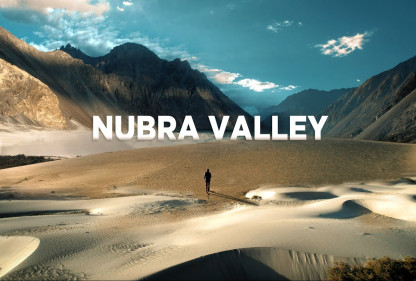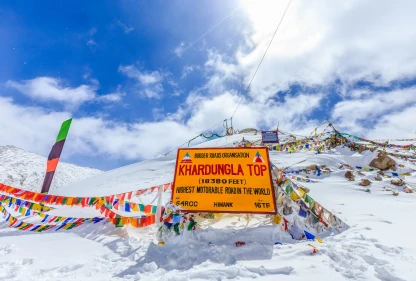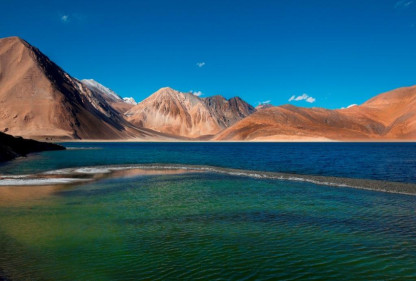Leh Ladakh
Redefining what breathtaking beauty truly means, Ladakh offers the most stunning views of the Himalayan wilderness, stretching from Siachen Glacier to the Great Himalayas.
Redefining what breathtaking beauty truly means, Ladakh offers the most stunning views of the Himalayan wilderness, stretching from Siachen Glacier to the Great Himalayas.
Eye-Catching Places to Visit in Ladakh
Redefining what breathtaking beauty truly means, Ladakh offers some of the most stunning views of the Himalayan wilderness, stretching from the Siachen Glacier to the Great Himalayas. Declared a Union Territory in 2019 (earlier part of Jammu & Kashmir), Ladakh is often described as the world’s coldest desert with its rugged, high-altitude terrain unlike any other region of India.
The name “Ladakh” itself comes from La (pass) and Dakh (land), meaning the land of high passes. The region is divided into two major districts: Leh (known for monasteries, Shanti Stupa, Leh Palace, and vibrant bazaars) and Kargil (known for its war memorials, history, and Indo-Pak border significance).
Whether you are a spiritual seeker, an adventurer, or a nature lover, Ladakh is a bucket-list destination for all.
Top Destinations in Ladakh
Pangong Lake
One of Ladakh’s most iconic attractions, Pangong Lake stretches across India and Tibet (around 134 km in length, 12 km wide at its broadest point). Known for its changing colors—shifting from deep blue to turquoise, green, and even grey depending on the time of day—the lake is a photographer’s dream. At an altitude of 4,350 m, the lake freezes completely in winter despite its saline nature, making it a surreal sight.
Khardung La
At 5,602 m above sea level, Khardung La is among the highest motorable passes in the world. Serving as the gateway to Nubra Valley and the Shyok region, it is a dream route for bikers and adventure enthusiasts. Constructed in 1976 and opened to the public in 1988, it also holds strategic importance for the Indian Army.
Nubra Valley
Known for its cold desert landscapes and the unique sight of double-humped Bactrian camels, Nubra Valley lies about 140 km from Leh. It was once part of the ancient Silk Route, adding to its historical charm. The confluence of the Nubra and Shyok rivers, scenic monasteries, and sand dunes at Hunder make this valley a must-visit.
Shanti Stupa
Built in 1991 by a Japanese Buddhist monk, Shanti Stupa stands atop a hill overlooking Leh. With its white-domed structure, it glows beautifully in the morning and under the moonlight. A sacred site, it enshrines relics of the Buddha and symbolizes world peace. The panoramic views of Leh from here are spectacular.
Kargil
Situated on the banks of the Indus River at an altitude of 2,676 m, Kargil is the second largest town in Ladakh. Known worldwide due to the 1999 Kargil War, the town houses several memorials and war monuments paying tribute to Indian soldiers. Apart from its historic importance, Kargil also offers scenic views and trekking opportunities.
Thiksey Monastery
About 19 km from Leh, Thiksey Monastery is a 12-storey Tibetan-style complex resembling the Potala Palace in Lhasa. It houses beautiful stupas, thangkas, and a 15-metre-high Maitreya Buddha statue. The monastery provides deep insights into Tibetan Buddhism and Ladakhi culture.
Activities Not to Be Missed in Ladakh
-
Magnetic Hill – The famous “gravity-defying” hill where vehicles in neutral gear appear to move uphill on their own, creating a fascinating optical illusion.
-
Sangam Point – The spectacular confluence of the Indus and Zanskar rivers, ideal for rafting and photography.
-
Leh Palace – A 17th-century nine-storey palace overlooking Leh, offering panoramic views of the town.
-
Shey Monastery and Palace – Once the summer capital of Ladakh, it features a massive gold-plated copper statue of Shakyamuni Buddha.
Festivals of Ladakh
Ladakh is deeply rooted in Buddhist traditions, and its festivals are a celebration of local faith, culture, and joy.
-
Hemis Festival (June/July): Celebrates Guru Padmasambhava with mask dances, rituals, and cultural performances.
-
Losar Festival (December): Marks the Tibetan New Year with rituals, feasts, and celebrations.
-
Ladakh Festival (September): A vibrant display of traditional music, dance, masked performances, and colorful processions across Leh.
Cuisine of Ladakh
Owing to its extreme climate, Ladakhi cuisine is simple yet nourishing, influenced by Tibetan and Central Asian flavors.
Must-try dishes include:
-
Thukpa – A hearty noodle soup.
-
Momos – Steamed dumplings filled with meat or vegetables.
-
Skyu – A traditional pasta dish with vegetables.
-
Tsampa (Ngamphe): Roasted barley flour, often mixed with butter tea.
Shopping in Ladakh
Ladakh is famous for its unique handicrafts and souvenirs. Some must-buy items include:
-
Pashmina shawls & woolens
-
Handwoven rugs & carpets
-
Thangka paintings & Buddhist artifacts
-
Prayer wheels, beads, and flags
-
Traditional silver and stone jewelry
-
Carved wooden furniture (choktse tables)
Leh Bazaar and local markets are ideal for exploring these treasures.
Best Time to Visit Ladakh
The best time to visit Ladakh is May to September, when the weather is pleasant and roads remain open. Winters (October to April) are extremely harsh, but they attract those seeking snow adventures and solitude.
How to Reach Ladakh
-
By Road:
-
Leh–Manali Highway (490 km): Open May–September, passing through Rohtang, Baralacha La, and Tanglang La.
-
Leh–Srinagar Highway (434 km): Open May–October, passing through Sonmarg, Zoji La, Drass, and Kargil.
-
Both routes are popular for bike trips.
-
-
By Air:
-
Leh’s Kushok Bakula Rimpochee Airport connects Ladakh to major Indian cities. On arrival, acclimatization is essential due to the sudden altitude change.
-
✨ Ladakh is truly an otherworldly destination—raw, spiritual, and adventurous, all at once.

